Women’s time and energy was dominated by cooking and meal preparation for the household. In rural areas, people followed seasonal diets and took their ingredients from the land. Without big grocery stores, women had to strenuously can or cure their food and plan accordingly to survive through the winter. They would harvest products from their garden to save for when the temperatures were too cold to grow any more produce. In the 1820s, fireplaces were replaced by cast iron stoves due to the increase in iron mining. After the Civil War, coal stoves became the norm and later in the 19th century, stoves powered by gas were advertised heavily. By 1910, over 7,000 stove models were patented. Common kitchen items were Dutch ovens, kettles, frying pans, and coffee mills. Click on the items listed below to see some necessities from the era.
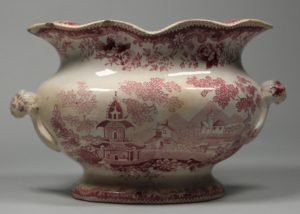
This red and white transferware chinoiserie patterned sugar bowl (MH.1.51) was used to hold sugar cubes or loose sugar. Chinoiserie is the European interpretation and imitation of Chinese and other East Asian artistic traditions.
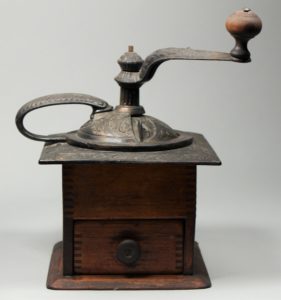
This wooden coffee mill with a decorative top (HF.1.53a) was used to grind coffee beans. The beans would be placed in the top of this mill and would be ground into the drawer as the handle was turned.
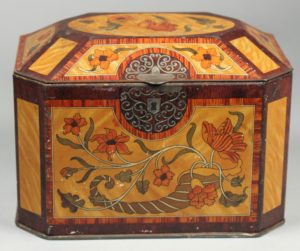
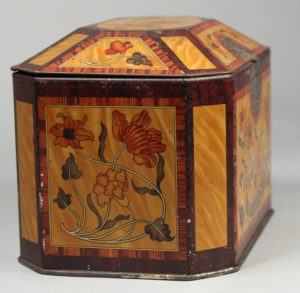
This small tea tin chest (HF.16.68b) was used to store tea so it looked more appealing to guests.
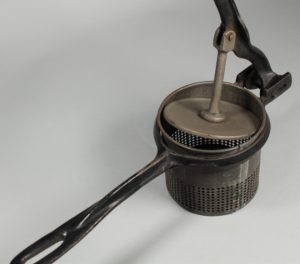
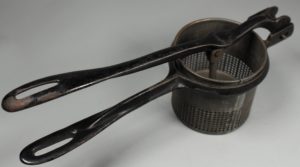
This potato ricer (HF.12.71) was used to make cooked potatoes or other foods more light and fluffy.
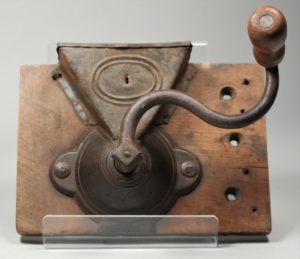
This tin and cast iron, wall-mounted coffee mill (HF.23.41) was used to grind coffee beans. The beans would go in the top of this coffee mill then be ground into a container that would be placed below it.
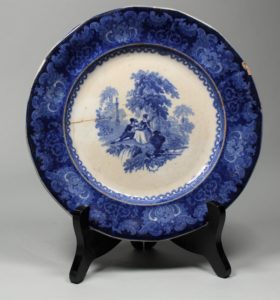
This 8″ dinner plate (HF.10.60) was designed using a Watteau pattern. Jean-Antoine Watteau was a French painter and draughtsman. His career sparked interest in color and movement in art.
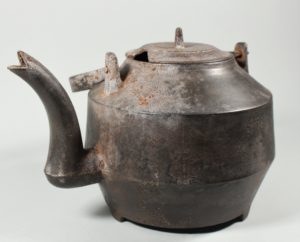
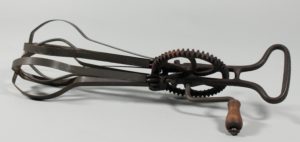
This egg beater (HF.13.71) is a hand tool that was used to mix and beat eggs or other ingredients like batter or dressings. They were typically made of stainless steel that could be easily cleaned.

This kerosene lamp with a holder and reflector (HF.19.46a-c) was used to light parts of the house before electric was invented.